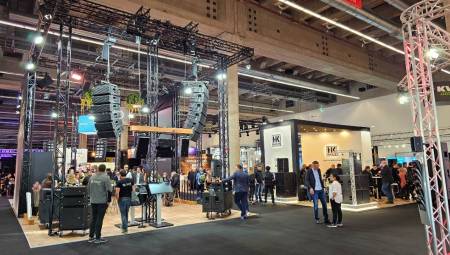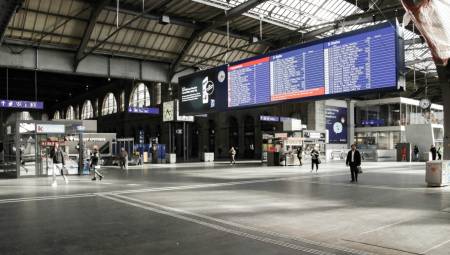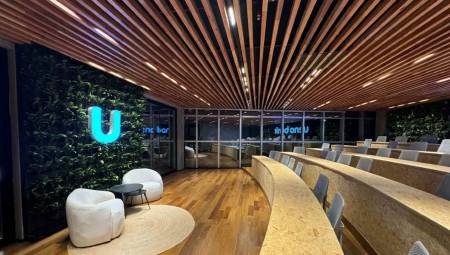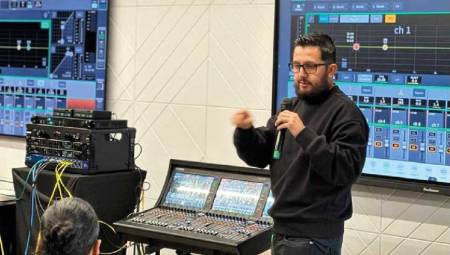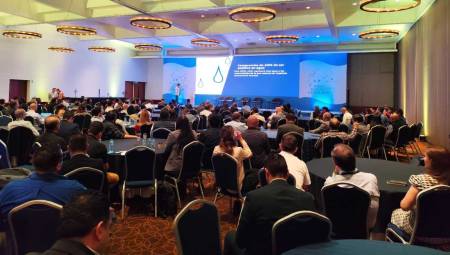 Mexico. Since the information network is today the circulatory system of any organization anywhere, regardless of size, geography and mission, organizations continue to do what is necessary to ensure that their networks are available, reliable, cost-effective and it is essential to ask what additional elements of the organization's operations could benefit from a network-centric strategy. And an obvious direction is to see wide adoption across virtually every market and one application is the rise of the smart building.
Mexico. Since the information network is today the circulatory system of any organization anywhere, regardless of size, geography and mission, organizations continue to do what is necessary to ensure that their networks are available, reliable, cost-effective and it is essential to ask what additional elements of the organization's operations could benefit from a network-centric strategy. And an obvious direction is to see wide adoption across virtually every market and one application is the rise of the smart building.
Although the precise definition may vary, the basic attributes for smart buildings of any form are as follows:
Energy and Environment
First, a smart building optimizes energy use. While almost all new construction is designed around the concept of a "green" building, minimizing energy consumption and optimizing energy efficiency through inherent architectural design, building materials, design, and operation, adding intelligence can have a dramatic impact on energy use. People move around the facility and when localized demands for energy use change instantly. And in patterns over time. HVAC, lighting and many more facilities management elements are susceptible to automation and optimization techniques integral to smart buildings.
Integrity and Security
Smart buildings can take advantage of advanced security mechanisms, from physical access control to video surveillance, fire alarm, firefighting and other emergency, health and safety situations, among others. Since security requirements vary depending on the specific nature of an organization's operations and the details of an organizational security policy, flexibility in techniques and the degree of automation applied here are essential. And, as this element cannot tolerate failures, integrity is also essential in this aspect of any smart building.
Productivity and Social Responsibility
Finally, smart buildings that optimize the productivity of the staff that occupies them. Providing worker comfort, minimizing unnecessary movement, and ensuring a productive environment are essential, with the added advantage of being able to advertise a high degree of social responsibility, along with all those productivity gains.
Perhaps most interesting of all, the smart building fundamentally leverages the exact same network that is already working and optimizing productivity, supporting all required applications, maintaining information, security and cost minimization.
Think of the smart building as another application on the network, enabling and optimizing the flow of a new type of traffic.
In doing so, however, it is fair to ask what new requirements will be put on the network. While many think that smart building operations present only minimal traffic and duty cycle demands, the opposite may be the case with video surveillance, of course, but you should check the sensors along with new applications and their servers. Many of which are emerging today will likely need an audit of current network resources and operations. This drives new planning activities, improvements and updates, and even modifications to operational strategies, policies and procedures as appropriate.
Smart buildings that work properly are not a nail. Smart building networks manage and optimize the flow not only of information, but also of people and, if necessary, of material. And smart building deployments must, of course, be as cost-effective, and synchronized with overall strategies and goals, as with any other major organizational initiative. Let's take a look at the requirements involved here and see how these goals can be achieved.
Opportunities, demands and requirements
Given that smart buildings are becoming another application on the grid and given that today's networks are evolving towards sufficient capacity to handle still very heavy and prioritized traffic flows, one might be tempted to think that traditional over-provisioning of network resources would be all that is required to implement and optimize a smart building. Tempting as that thought might be, however, such simplicity can present a challenge.
Although smart buildings can indeed be seen as another application on the network, they are likely to present a number of very demanding requirements, depending on the specific location and functions. These lawsuits may include:
Coverage
Coverage used may mean having an Ethernet port within reach, but it often refers to the range of an organization's Wi-Fi network. More specifically, the key metric here is how much desmepeño is done at a given distance between the ends of any given wireless connection. Smart buildings typically demand adequate service up to the exterior walls of the structure, and often with universal coverage between those walls and sometimes beyond, as in the case of deployments in the campus area where outdoor service is often required.
Capacity
However, as performance requirements vary with the application, even more important is the overall capability of the solution: the ability to handle all the traffic required with the throughput for each application and with minimal connection latency. Products based on Wave 2 of the IEEE 802.11ac have the necessary performance with support for old technologies, and with price/performance features that make any upgrade and replacement, or the evolution of simple infrastructure over time, easy to justify and very cost-effective.
Assuming, then, the installation of contemporary Wi-Fi technology, capacity is therefore a relatively minor concern in most smart building projects.
Cost control
A real advantage to the smart building strategy is leveraging existing network infrastructure to meet desired goals As we have noted above, some network enhancements are expected as a matter of course, benefiting all applications beyond the functions of the smart building alone. But any addition affects operations, and while they are likely to be few in number, allowing the cost of smart building operations to be easily amortized like any other network application.
Other updates
Finally, some additions to the wired infrastructure, typically in the form of additional switching ports that provide connectivity and power for additional access points, along with improvements to management systems, may also be necessary. Switching ports, however, continue to exhibit remarkable price/performance with each new generation of Ethernet switching products and management software is best evaluated in terms of the increased productivity realized by operations personnel and the end users they support. Of course, a cost/benefit analysis is required on each individual, but any improvement required to support smart buildings will typically be few in number, very cost-effective, and will literally pay for themselves in a relatively short period of time.
The bottom line is that smart building deployments will have minimal impact on IT budgets and operating costs, because they will add up to the benefits gained from leveraging the existing network.
Text written by Carlos Cisneros, Channel Manager at Extreme Networks for Latin America.




